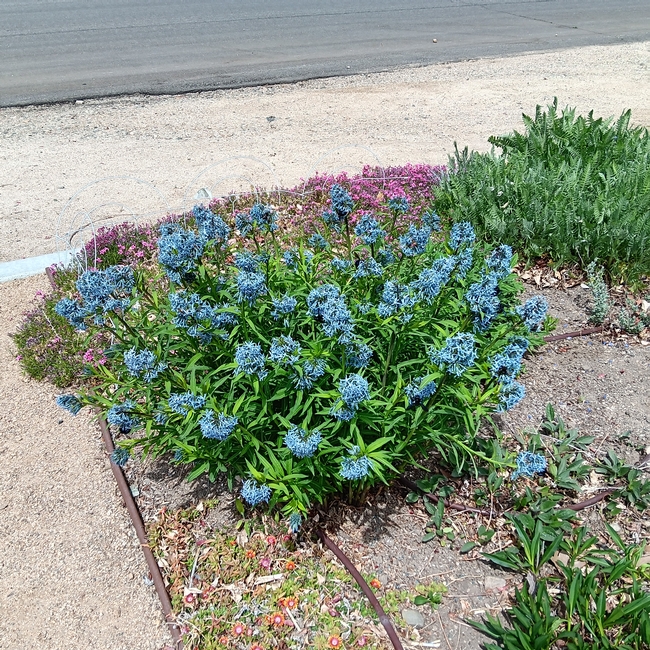Amsonia, a plant native to the Northeastern USA, seems to be little known in the West. They are commonly known as bluestars on account of the shape and color of their flowers. I have never found it in local nurseries, but I have always been curious to find out how it would do in the Eastern Sierra since it is said to be hardy in USDA zones 3-11.
They like well draining soil and regular water, but are somewhat drought tolerant once established. They need partial shade in the hottest areas. Rabbits and deer tend to avoid eating it unless forage is scarce.
There are several different species of Amsonia, but Amsonia hubrichtii is considered to be one of the best bluestars which has needle like but soft foliage, sky-blue flowers and a bright gold autumn foliage color.
I planted an Amsonia hybrid “Blue Ice” about three years ago in a pollinator garden with sandy soil which I amended by the addition of a little compost, and it has performed very well. It makes a neat clump of foliage about 2 feet tall, with sturdy green stems which are black near the tips. The star-shaped, sky-blue flowers erupt in mid-April. The foliage has good fall color, after which the stems die down completely for the winter. It is not at all invasive, and the single clump has gradually increased in size.
They are relatives of Nerium oleander, and they contain a milky sap which can irritate skin. They are said to be hosts to swallowtail butterfly caterpillars.
One day recently, when the plant was in full flower, I was stunned to witness a frenzy of carpenter bees working the flowers! There were at least 23 bees — some massive — on the clump at the same time, together with 3 bumble bees, two other species of native bees that I could not identify, two different butterflies, and a ladybug! I have never seen a plant with so much pollinator activity at one time. Interestingly, these bees are all natives to our area, although the plant is not, and I have never seen a domestic bee on it.
I am pleased that I tried it.
Further information can be found at:
https://www.chicagobotanic.org/sites/default/files/pdf/plantinfo/fg187_amsonia.pdf
